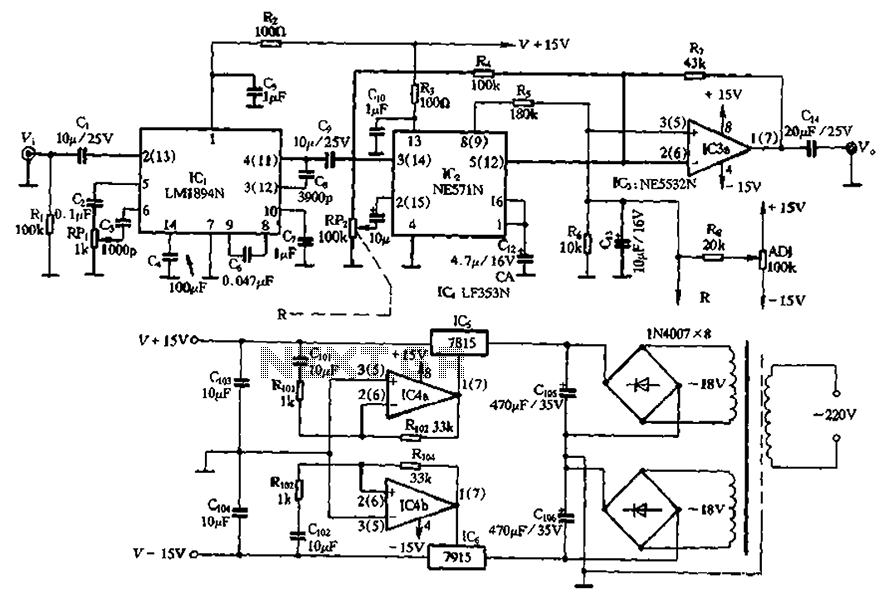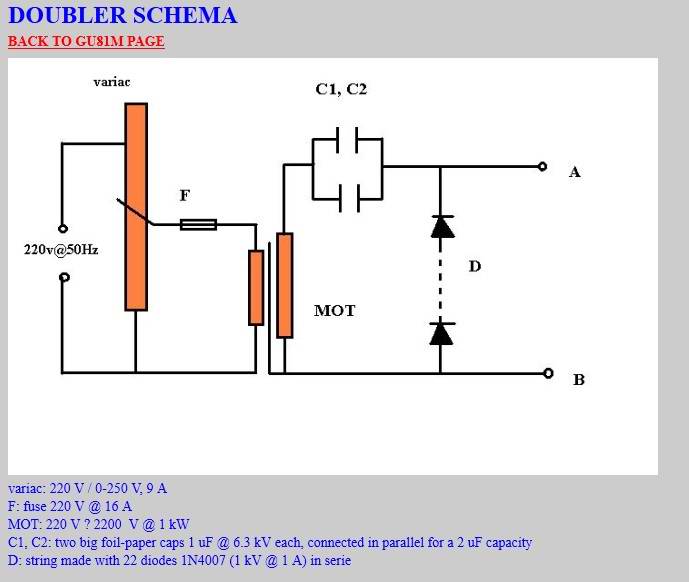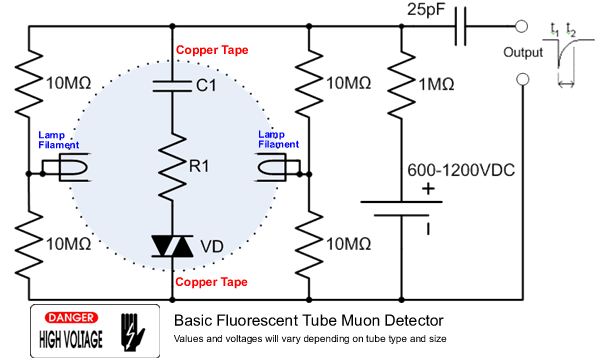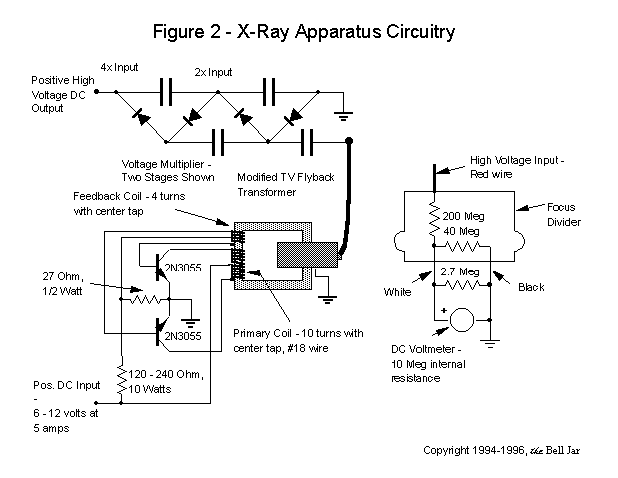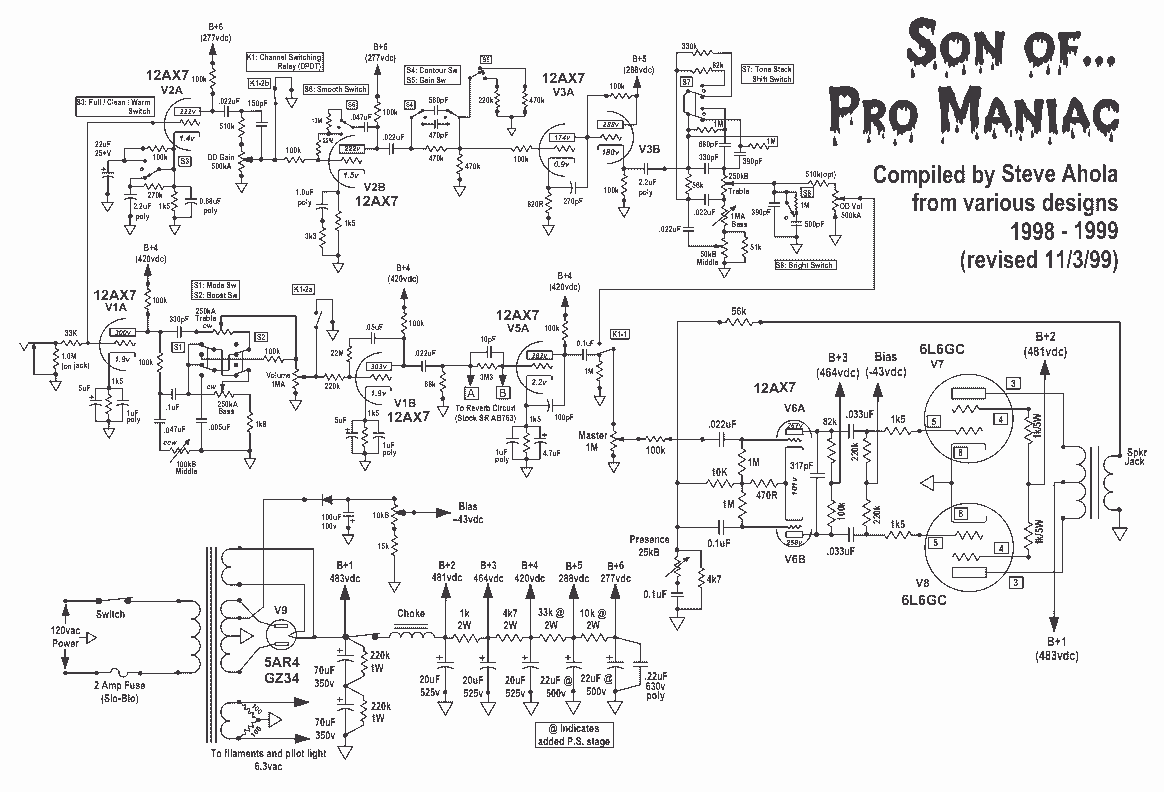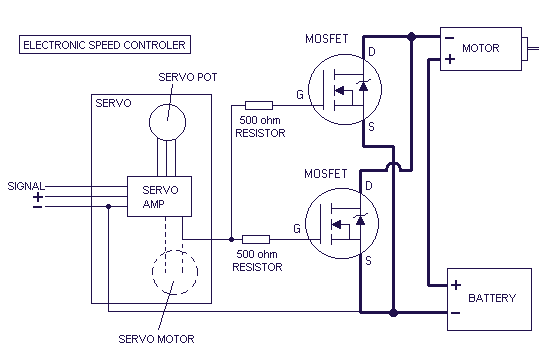
Improved vacuum tube models for SPICE
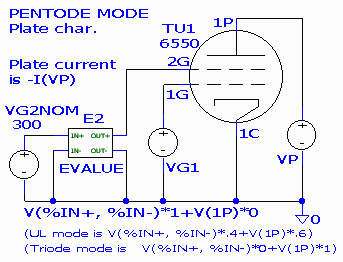
The principal hobby interest is photography, and due to long working hours at Imatest, there is limited time to update the article or address complex inquiries. James E. Lanier's PSPICE Triode Calculator is an emerging tool for determining tube model parameters, which is still in development with plans to include tetrodes and pentodes. SPICE, an electronic circuit simulation program initially created at the University of California at Berkeley, has gained widespread use in the electronics and semiconductor sectors. It is capable of conducting highly accurate time and frequency domain analyses of intricate analog and digital circuits, including harmonic and intermodulation distortion. Various commercial versions of SPICE are available for personal computers, with PSpice from OrCAD being the most notable. The downloadable PSpice student version (version 9.1 at the last check) has limited capabilities compared to solid-state circuit design standards, but it is particularly effective for simulating vacuum tube amplifiers, which typically have fewer components. This program was utilized for all examples in the article. However, it can be challenging to locate on the OrCAD website; accessing the CadencePCB homepage and selecting "All Downloads" is necessary. Other prominent SPICE implementations include Electronics Workbench and ICAP/4 from Intusoft. Duncan Munro's list of SPICE vendors may reveal additional options. WinSpice is a free Spice3F4 port for Windows 95, 98, 2000, and NT, which can simulate larger circuits than the evaluation version of PSpice. SPICE includes built-in models for passive components (resistors, capacitors, inductors) and most active semiconductor devices (bipolar transistors, FETs, op-amps), but lacks models for vacuum tubes. SPICE models can be downloaded from manufacturers' websites. Scott Reynolds and Marshall Leach model vacuum tubes as voltage-controlled current sources, where the output current is a weighted sum of controlling element voltages raised to the three-halves power, with different controlling elements for triodes and pentodes. The plate current equation for triodes involves various voltages relative to the cathode, the amplification factor, and a fitting factor. The pentode equation differs by using the screen grid in place of the plate as a controlling element and includes an arctangent term to model a response curve "knee." These equations are derived from fundamental physics and illustrate the limitations of assuming perfect control over plate current, especially in regions where leakage current affects performance. The modeling error becomes significant when tubes operate in regions of high plate voltage and negative grid voltage, particularly in class AB push-pull amplifiers.
The SPICE simulation environment provides a robust platform for analyzing electronic circuits, particularly those involving vacuum tubes, which are less commonly modeled in contemporary circuit simulation tools. The development of specific calculators, such as James E. Lanier's PSPICE Triode Calculator, aims to bridge this gap by offering a means to derive accurate parameters for tube circuits, enhancing the fidelity of simulations. The adaptation of SPICE for vacuum tube analysis is critical, as traditional models often overlook the unique characteristics of tube operation, leading to inaccuracies in simulation results.
In the context of vacuum tube amplifiers, the equations presented by Reynolds and Leach are pivotal. They account for the nonlinear behaviors of triodes and pentodes, where the output current is influenced by the controlling voltages. The complexity of these models reflects the intricate nature of tube operation, where factors such as grid control and leakage currents play significant roles in performance. The plate current equations, derived from the Langmuir-Childs law, provide a theoretical foundation for understanding tube behavior under various operating conditions.
Furthermore, the graphical representation of plate curves for specific tubes, such as the 12AX7, illustrates the practical implications of these equations. The load lines and operational regions highlight the critical areas where modeling discrepancies can lead to performance issues, especially in high-demand applications like push-pull amplifiers. The insights gained from these simulations are invaluable for engineers and hobbyists alike, facilitating a deeper understanding of tube dynamics and enabling the design of more effective amplifier circuits.
In conclusion, the integration of advanced simulation tools with traditional vacuum tube technology represents a significant advancement in electronic design. By leveraging SPICE and dedicated calculators, designers can achieve greater accuracy in modeling and simulating tube circuits, ultimately leading to improved performance and reliability in audio and other applications involving vacuum tubes.As my principal hobby interest is now photography and I work crazy long hours at Imatest, I won`t have much time to update this article or answer difficult questions. James E. Lanier`s PSPICE Triode Calculator is a promising program for finding tube model parameters. It`s still under development; he plans to expand it to include tetrodes and pent odes. SPICE, an electronic circuit simulation program originally developed at the University of California at Berkeley, has found wide acceptance in the electronics and semiconductor industries. It can perform highly accurate time and frequency domain analysis of complex analog and digital circuits (including harmonic and IM distortion).
Several commercial versions of SPICE run on personal computers, most notably PSpice from OrCAD. The downloadable PSspice student version (version 9. 1 at last look) has limited capabilities by standards of solid-state circuit design, but it can be amazingly useful in simulating vacuum tube amplifiers, which tend to have fewer components. It was used for all examples in this article. It`s hard to find on the OrCAD website. I had to go to the CadencePCB home page and click on All Downloads. Other well-known SPICE implementations include Electronics Workbench, 800-263-5552, and ICAP/4, from Intusoft, P.
O Box 710 San Pedro, CA 90733-0710; 310-833-0710. Duncan Munro`s list of SPICE vendors may contain some hidden treasures. WinSpice is a free Spice3F4 Port for Windows 95, 98, 2000 & NT. Very intriguing. It will simulate much larger circuits than evaluation PSpice. SPICE contains built-in models for passive devices (resistors, capacitors, inductors, etc. ) and for most active semiconductor devices (bipolar transistors, FETs, Op Amps, etc. ), but none for vacuum tubes. SPICE models and can be downloaded from manufacturer`s Websites. Scott Reynolds1 and Marshall Leach2 model vacuum tubes as voltage-controlled current sources whose output current is a weighted sum of controlling element voltages raised to the three-halves power. The controlling elements are different for triodes and pentodes. (Since the suppressor grid has little effect on the transfer characteristics, pentodes are modeled as tetrodes.
) The plate current equation for triodes is where IP is plate current, EG is control grid voltage, EP is plate voltage, EG2 is screen grid voltage (all voltages with respect to the cathode), µ is the amplification factor, and kG1 is a factor used to fit the equation to data. The pentode equation differs from the triode equation in that the screen grid replaces the plate as a controlling element, and an arctangent term (from Scott Reynolds` model) is added to model a response curve "knee" whose location is proportional to kVB.
Equations (1) and (2) are forms of the Langmuir-Childs law, which can be derived from fundamental physics. 3 Plate curves for a 12AX7 triode with µ = 93 (below the specified value but a good overall fit to equation (1) are illustrated below in Figure 1.
The difficulty with equations (1) and (2) is that they assume that the grid has perfect control over the plate current, i. e. , that there is no leakage current. The real world is, alas, not so kind, and these equations give a poor estimate of plate current for large positive plate voltage and large negative grid voltage, 5 region (A) in Figure 1, above.
Compare this with region (A) in Figure 2, below, which is derived from the new model but matches published curves4 extremely well. The modeling error would not be serious if tubes did not operate in the region of greatest error. Unfortunately they do, as illustrated in Figure 1 by a typical load line for a 12AX7 with a 350V plate supply and a 150kW plate resistor.
The load line crosses region (A), and operation may extend into this region for large signals. This problem is exacerbated in class AB push-pull amplifiers, where the operation of each tube traverses the region of wors 🔗 External reference
The SPICE simulation environment provides a robust platform for analyzing electronic circuits, particularly those involving vacuum tubes, which are less commonly modeled in contemporary circuit simulation tools. The development of specific calculators, such as James E. Lanier's PSPICE Triode Calculator, aims to bridge this gap by offering a means to derive accurate parameters for tube circuits, enhancing the fidelity of simulations. The adaptation of SPICE for vacuum tube analysis is critical, as traditional models often overlook the unique characteristics of tube operation, leading to inaccuracies in simulation results.
In the context of vacuum tube amplifiers, the equations presented by Reynolds and Leach are pivotal. They account for the nonlinear behaviors of triodes and pentodes, where the output current is influenced by the controlling voltages. The complexity of these models reflects the intricate nature of tube operation, where factors such as grid control and leakage currents play significant roles in performance. The plate current equations, derived from the Langmuir-Childs law, provide a theoretical foundation for understanding tube behavior under various operating conditions.
Furthermore, the graphical representation of plate curves for specific tubes, such as the 12AX7, illustrates the practical implications of these equations. The load lines and operational regions highlight the critical areas where modeling discrepancies can lead to performance issues, especially in high-demand applications like push-pull amplifiers. The insights gained from these simulations are invaluable for engineers and hobbyists alike, facilitating a deeper understanding of tube dynamics and enabling the design of more effective amplifier circuits.
In conclusion, the integration of advanced simulation tools with traditional vacuum tube technology represents a significant advancement in electronic design. By leveraging SPICE and dedicated calculators, designers can achieve greater accuracy in modeling and simulating tube circuits, ultimately leading to improved performance and reliability in audio and other applications involving vacuum tubes.As my principal hobby interest is now photography and I work crazy long hours at Imatest, I won`t have much time to update this article or answer difficult questions. James E. Lanier`s PSPICE Triode Calculator is a promising program for finding tube model parameters. It`s still under development; he plans to expand it to include tetrodes and pent odes. SPICE, an electronic circuit simulation program originally developed at the University of California at Berkeley, has found wide acceptance in the electronics and semiconductor industries. It can perform highly accurate time and frequency domain analysis of complex analog and digital circuits (including harmonic and IM distortion).
Several commercial versions of SPICE run on personal computers, most notably PSpice from OrCAD. The downloadable PSspice student version (version 9. 1 at last look) has limited capabilities by standards of solid-state circuit design, but it can be amazingly useful in simulating vacuum tube amplifiers, which tend to have fewer components. It was used for all examples in this article. It`s hard to find on the OrCAD website. I had to go to the CadencePCB home page and click on All Downloads. Other well-known SPICE implementations include Electronics Workbench, 800-263-5552, and ICAP/4, from Intusoft, P.
O Box 710 San Pedro, CA 90733-0710; 310-833-0710. Duncan Munro`s list of SPICE vendors may contain some hidden treasures. WinSpice is a free Spice3F4 Port for Windows 95, 98, 2000 & NT. Very intriguing. It will simulate much larger circuits than evaluation PSpice. SPICE contains built-in models for passive devices (resistors, capacitors, inductors, etc. ) and for most active semiconductor devices (bipolar transistors, FETs, Op Amps, etc. ), but none for vacuum tubes. SPICE models and can be downloaded from manufacturer`s Websites. Scott Reynolds1 and Marshall Leach2 model vacuum tubes as voltage-controlled current sources whose output current is a weighted sum of controlling element voltages raised to the three-halves power. The controlling elements are different for triodes and pentodes. (Since the suppressor grid has little effect on the transfer characteristics, pentodes are modeled as tetrodes.
) The plate current equation for triodes is where IP is plate current, EG is control grid voltage, EP is plate voltage, EG2 is screen grid voltage (all voltages with respect to the cathode), µ is the amplification factor, and kG1 is a factor used to fit the equation to data. The pentode equation differs from the triode equation in that the screen grid replaces the plate as a controlling element, and an arctangent term (from Scott Reynolds` model) is added to model a response curve "knee" whose location is proportional to kVB.
Equations (1) and (2) are forms of the Langmuir-Childs law, which can be derived from fundamental physics. 3 Plate curves for a 12AX7 triode with µ = 93 (below the specified value but a good overall fit to equation (1) are illustrated below in Figure 1.
The difficulty with equations (1) and (2) is that they assume that the grid has perfect control over the plate current, i. e. , that there is no leakage current. The real world is, alas, not so kind, and these equations give a poor estimate of plate current for large positive plate voltage and large negative grid voltage, 5 region (A) in Figure 1, above.
Compare this with region (A) in Figure 2, below, which is derived from the new model but matches published curves4 extremely well. The modeling error would not be serious if tubes did not operate in the region of greatest error. Unfortunately they do, as illustrated in Figure 1 by a typical load line for a 12AX7 with a 350V plate supply and a 150kW plate resistor.
The load line crosses region (A), and operation may extend into this region for large signals. This problem is exacerbated in class AB push-pull amplifiers, where the operation of each tube traverses the region of wors 🔗 External reference
